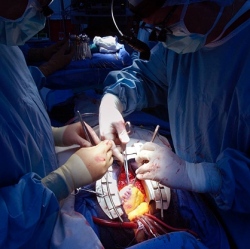
Medical science, boosted by manufacturing and information technology, is on the cusp of being able to grow human tissue.
So believes Nina Tandon, a senior fellow at Columbia University’s Lab for Stem Cells and Tissue Engineering, who for her Ph.D. thesis grew cardiac cells that beat like tiny hearts.
A third age of medicine is beginning, she said in a speech here at the TEDx Berlin conference held in conjunction with IFA consumer-electronics show. The first age, most of human history, had only a primitive understanding of the body. The second age ran from the first dialysis machines in 1924 to today’s organ replacement procedures dependent on human donors and limited by the fact that many tissues are rejected by the body they’re being transplanted into.
The third age builds replacement materials through tissue engineering.
"We’ve gone to growing pieces of the body that are living — from scratch," Tandon said. Though she’s careful to give credit where it’s due: humans provide a framework and the correct environment, but "the real tissue engineers are the cells."
Her work so far has focused coaxing cells into activity with electrical impulses inside what she calls a bioreactor. Some of her work is shown in a video of a pulsating cube of lab-grown rat heart tissue. It’s about 5mm on a side, a scale that makes her ambition — growing a patch of heart tissue that could be applied after a heart attack — seem more achievable.
